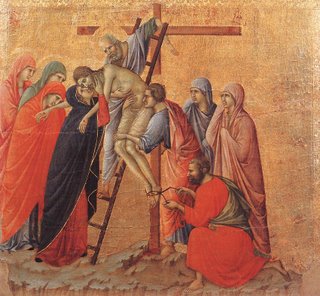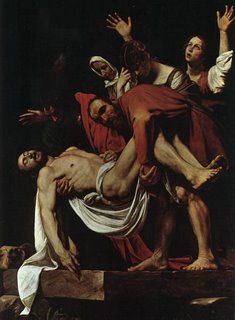 Jesus is taken down from the cross and his mother--accepting the pain that his Son bore for the sake of the world--is there to receive him in her bosom. Each of the seven swords which transfixed the heart of the mother was Mary's renewed assent to her Son's sufferings. It is beyond human comprehension that a person should say "yes" to everything, even to the most harrowing pain.
Jesus is taken down from the cross and his mother--accepting the pain that his Son bore for the sake of the world--is there to receive him in her bosom. Each of the seven swords which transfixed the heart of the mother was Mary's renewed assent to her Son's sufferings. It is beyond human comprehension that a person should say "yes" to everything, even to the most harrowing pain.
In her unconditional "yes" Mary becomes the "redeemed earth," capable of receiving on her lap the dead body of the Redeemer. This scene wrapped in silence reveals that Christ's Passion was not suffered in vain: Mary in this moment of weariness and infinite sorrow, represents humanity who accepts with gratitutde heaven's blessings. In the end her Son's body is not buried ina cold and inanimate matter ("matter" comes from the Latin word mater meaning "mother") but it is placed in the maternal and fruitful bosom of Mary, a prototype of incarnate love which finds its culmination in Mary. The Pieta therefore is not a fleeting image of sorrow but one engraved forever in human history: a mysterious image portraying maternal fecundity enshrouding the dead Son's body--the source of a new fecundity for the mother.
No comments:
Post a Comment